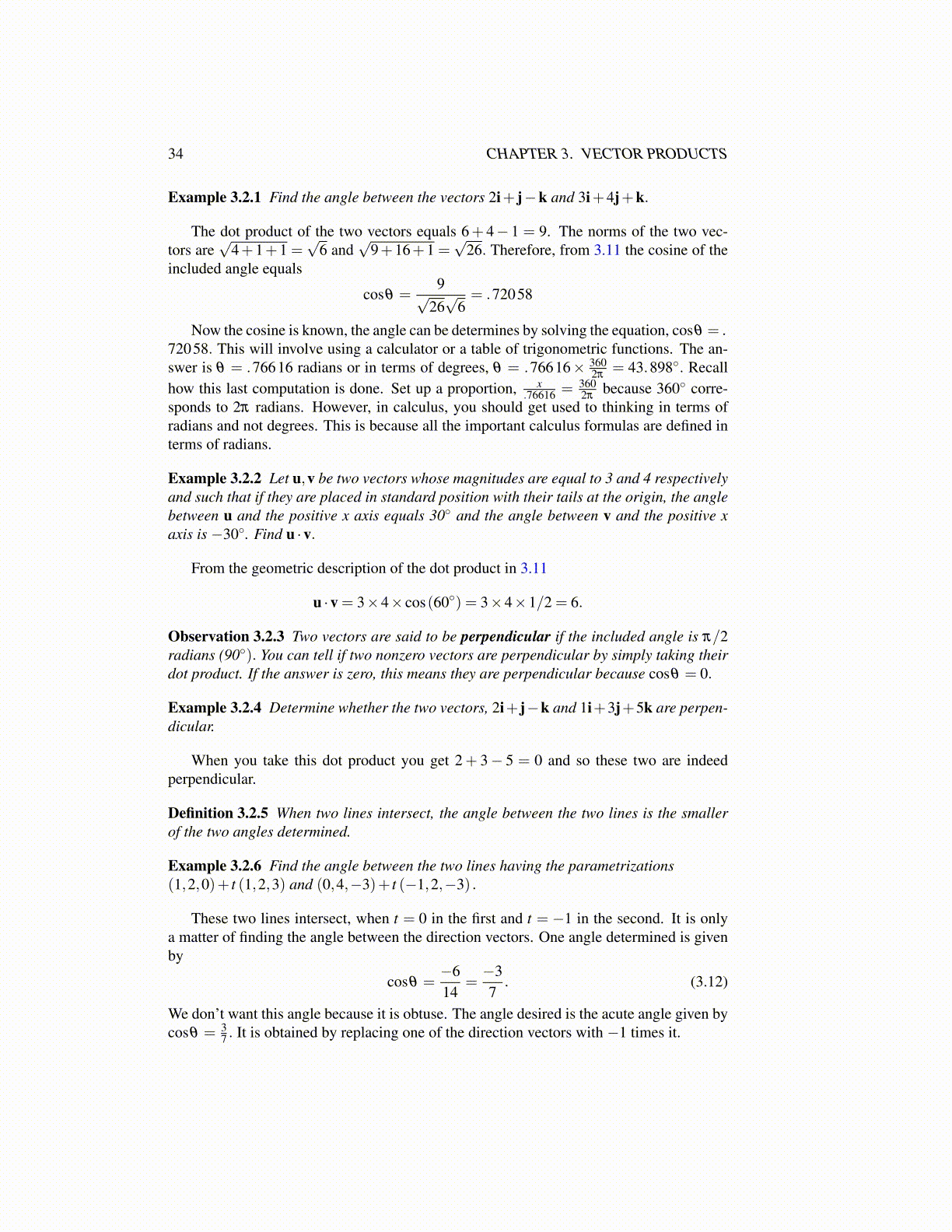
34 CHAPTER 3. VECTOR PRODUCTS
Example 3.2.1 Find the angle between the vectors 2i+ j−k and 3i+4j+k.
The dot product of the two vectors equals 6+ 4− 1 = 9. The norms of the two vec-tors are
√4+1+1 =
√6 and
√9+16+1 =
√26. Therefore, from 3.11 the cosine of the
included angle equals
cosθ =9√
26√
6= .72058
Now the cosine is known, the angle can be determines by solving the equation, cosθ = .72058. This will involve using a calculator or a table of trigonometric functions. The an-swer is θ = .76616 radians or in terms of degrees, θ = .76616× 360
2π= 43.898◦. Recall
how this last computation is done. Set up a proportion, x.76616 = 360
2πbecause 360◦ corre-
sponds to 2π radians. However, in calculus, you should get used to thinking in terms ofradians and not degrees. This is because all the important calculus formulas are defined interms of radians.
Example 3.2.2 Let u,v be two vectors whose magnitudes are equal to 3 and 4 respectivelyand such that if they are placed in standard position with their tails at the origin, the anglebetween u and the positive x axis equals 30◦ and the angle between v and the positive xaxis is −30◦. Find u ·v.
From the geometric description of the dot product in 3.11
u ·v = 3×4× cos(60◦) = 3×4×1/2 = 6.
Observation 3.2.3 Two vectors are said to be perpendicular if the included angle is π/2radians (90◦). You can tell if two nonzero vectors are perpendicular by simply taking theirdot product. If the answer is zero, this means they are perpendicular because cosθ = 0.
Example 3.2.4 Determine whether the two vectors, 2i+ j−k and 1i+3j+5k are perpen-dicular.
When you take this dot product you get 2+ 3− 5 = 0 and so these two are indeedperpendicular.
Definition 3.2.5 When two lines intersect, the angle between the two lines is the smallerof the two angles determined.
Example 3.2.6 Find the angle between the two lines having the parametrizations(1,2,0)+ t (1,2,3) and (0,4,−3)+ t (−1,2,−3) .
These two lines intersect, when t = 0 in the first and t = −1 in the second. It is onlya matter of finding the angle between the direction vectors. One angle determined is givenby
cosθ =−614
=−37
. (3.12)
We don’t want this angle because it is obtuse. The angle desired is the acute angle given bycosθ = 3
7 . It is obtained by replacing one of the direction vectors with −1 times it.